© Steve Cary, August 31, 2025
Lots of stories and images to share with you here at the end of August. Many thanks to the generous contributors! I’m still looking for Halloween images of murdered butterflies! Please email them to me at sjcary1@outlook.com and put “Halloween” in the subject line.
Chasing Butterflies in the High Country: My Summer Ascent of Wheeler Peak. by Sajan K.C. McGuire Center for Lepidoptera and Biodiversity, University of Florida, Gainesville, FL, USA.
This year (2025) marked the beginning of my PhD journey at the University of Florida, Gainesville, FL, and like many lepidopterists, I spent much of the summer outdoors chasing butterflies. My focus was on Megathymus, the Giant Skippers of the American Southwest, so my wife Anisha and I traveled through New Mexico and Arizona, joined in New Mexico by our friends Joe and Rebecca from Albuquerque. We explored the mountains around Angel Fire and Eagle Nest, where I hoped to document the northernmost range of Megathymus ursus/violae, given the abundance of their host plant, the Banana Yucca (Yucca baccata). Yet, despite my primary goal, I couldn’t resist the lure of the alpine butterflies I had long read about.
At 13,161 ft (4,011 m), Wheeler Peak is New Mexico’s highest point, and it has long been known among butterfly enthusiasts as a stronghold for several high-elevation species found nowhere else in the state. Steve Cary told me two years ago that if I climbed Wheeler, I could encounter treasures such as the Magdalena Alpine (Erebia magdalena), the Lustrous Copper (Lycaena cupreus), and Melissa Arctic (Oeneis melissa). That was all the motivation I needed to lace up my boots and head into the alpine wilderness!
July 7–8, 2025: A Weekend in the High Country. On July 7th, after returning from Angel Fire and Eagle Nest, we headed toward Taos Ski Valley. At the base near the Bavarian Restaurant, we were immediately greeted by a swirl of butterflies: fritillaries everywhere—including the Southwestern Fritillary (Argynnis nausicaa) (tens), Mormon Fritillary (Argynnis mormonia) (at least two), and Arctic Fritillary (Boloria chariclea) (tens). Greenish Blue (Icaricia saepiolus) (tens), Purplish Copper (Tharsalea helloides) (about six), Common Alpine (Erebia epipsodea) (tens), and even a few Ruddy Coppers (Tharsalea rubidus) (two) filled the meadows. I also observed three Milbert’s Tortoiseshells (Aglais milberti), one California Tortoiseshell (Nymphalis californica), and two Margined Whites (Pieris marginalis). To my surprise, we spotted about ten Rocky Mountain Parnassians (Parnassius smintheus) early in the day, right at the base without climbing—a rare treat, especially for Joe and Rebecca, who preferred to avoid strenuous hikes.
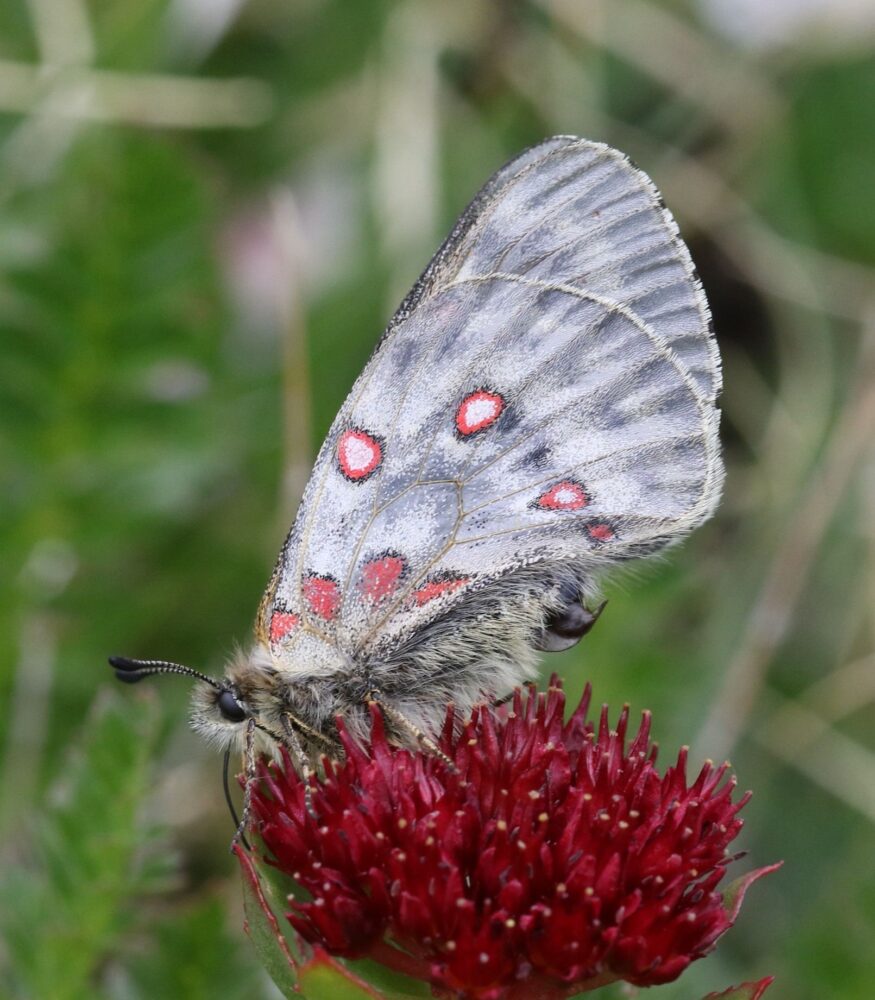
Rebecca, Joe, and Anisha were understandably concerned about me attempting Wheeler Peak on my own, but the lure of the Magdalena Alpine was too strong to ignore. I had also checked with a few naturalists beforehand, who assured me that the climb was doable. Early on July 8th, Joe dropped me off at the Bavarian Restaurant around 7:00 a.m., and by 7:15 I was on the trail. Within an hour, I had reached Williams Lake (about 11,040 ft / 3,365 m), where I paused to refuel with a chocolate bar and some Gatorade before pressing on.
Butterflies on the Ascent. It didn’t take long for the sun to warm the slopes. Parnassians (tens) were the first to take flight, followed by Mead’s Sulphurs (Colias meadii) (about eight). Common Alpines were everywhere along the trail (about 40). I had my Canon 7D Mark II, 180 mm macro lens, and a speedlight—a setup that caught the attention of passing hikers, many of whom smiled or asked what I was photographing.

Near the scree fields, I finally encountered what I had hoped for: Magdalena Alpine (at least two). Dark, elusive, and impossible to approach closely, they tested both my patience and camera skills, flitting among rocky crevices and darting away at the slightest movement. Not far above, I stumbled into a hotspot for Lustrous Copper (at least six individuals), and higher still I began to see Melissa Arctic and Variable Checkerspots (Euphydryas anicia). By the time I reached the summit, I was surrounded by literal hundreds of Melissa Arctics, Variable Checkerspots, and Parnassians. I even spotted one Anise Swallowtail (Papilio zelicaon) at the peak and two Chryxus Arctics (Oeneis chryxus). Interestingly, Melissa Arctics aggressively chased away other Oeneis or Erebia species that tried to enter their territories.
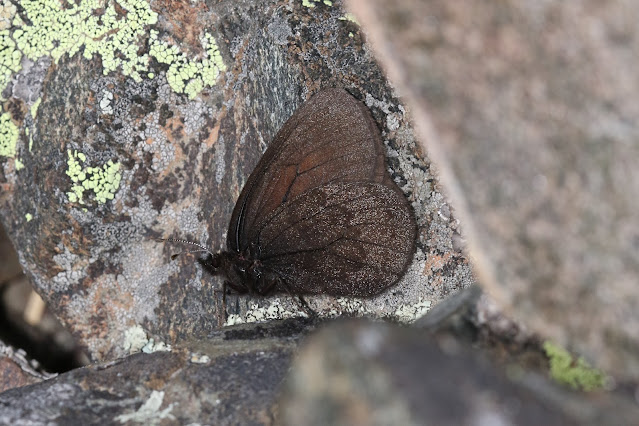
The scene was overwhelming: thousands of butterflies, dazzling against the alpine backdrop; below, vast, neat green meadows stretched out on both sides, punctuated by shimmering alpine lakes reflecting the sky. I lingered on my way down, trying for better shots of Magdalena Alpine where I’d seen them earlier, but they remained notoriously uncooperative. By 3:30 p.m., I began my descent, reaching the base around 5:00, where I breathlessly recounted the spectacle to Joe, Rebecca, and Anisha.
A Secret Return. Two days later, on July 11th, I couldn’t resist bringing Anisha back with me—this time without Joe and Rebecca knowing. In fact, they’ll only discover it now, through this blog. The butterflies were just as abundant, and it was special to share the moment with her. We didn’t see the Chryxus Arctic that day, but we did find one Dobra Cloudywing (Cecropterus dobra) at the peak, one Aphrodite Fritillary (Argynnis aphrodite), and at least two Dorcas Coppers (Lycaena dorcas) down at the base—the latter two being new species for me. Watching Anisha’s excitement as she stood amid clouds of alpine butterflies on Wheeler Peak was one of the highlights of the entire trip for me.
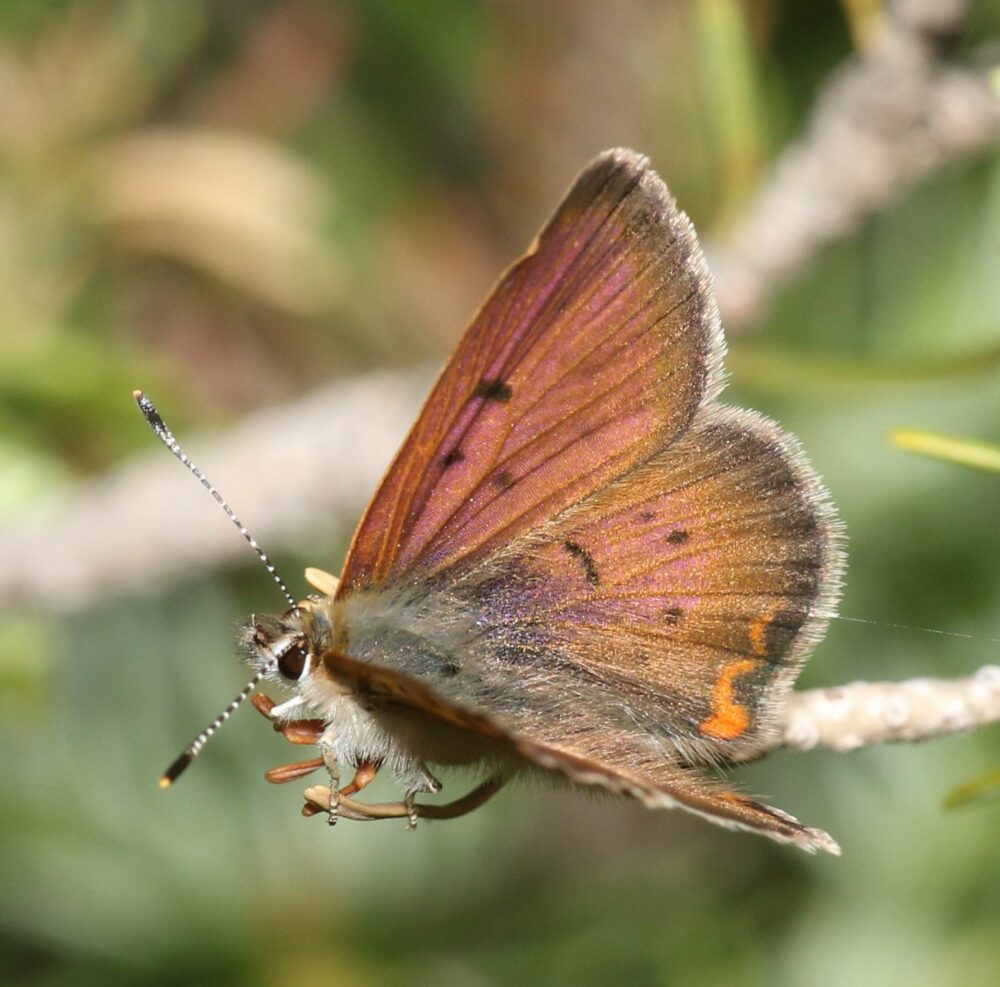
Reflections. From the sprawling meadows at the Bavarian Restaurant base to the rocky, wind-swept summit of Wheeler Peak, I had never seen such density of alpine butterflies in one place. It was easily one of the best butterfly days of my life. While the rest of our trip took us into Arizona in search of the elusive Ursine Giant Skipper (Megathymus ursus)—a quest dampened by conditions too dry for other butterflies—the days at Wheeler Peak remain unforgettable. I truly hope that this habitat continues to sustain such remarkable diversity for years to come.
For me, the climb wasn’t just about chasing rarities. It was a reminder of why I’m here in the first place: to combine adventure, science, and discovery, and to share the wonder of butterflies with the people I love.

All observations have been uploaded and geolocated on our website, Butterfly Explorers, at https://www.butterflyexplorers.com/p/recently-added.html.
My friend Hans and I share a fondness for hoptree, a native small tree/large shrub in the citrus family. Most nurseries, even native plant nurseries, don’t carry it. It happens to be a major caterpillar foodplant for Two-Tailed Swallowtails. I see females placing eggs in my hoptree plants in early summer, but I never see any caterpillars. Hans had better luck . . .
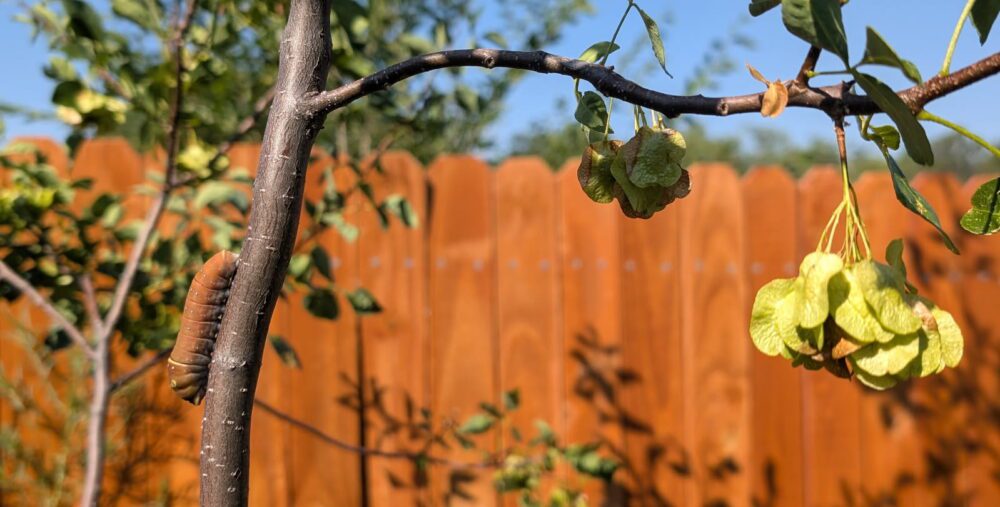
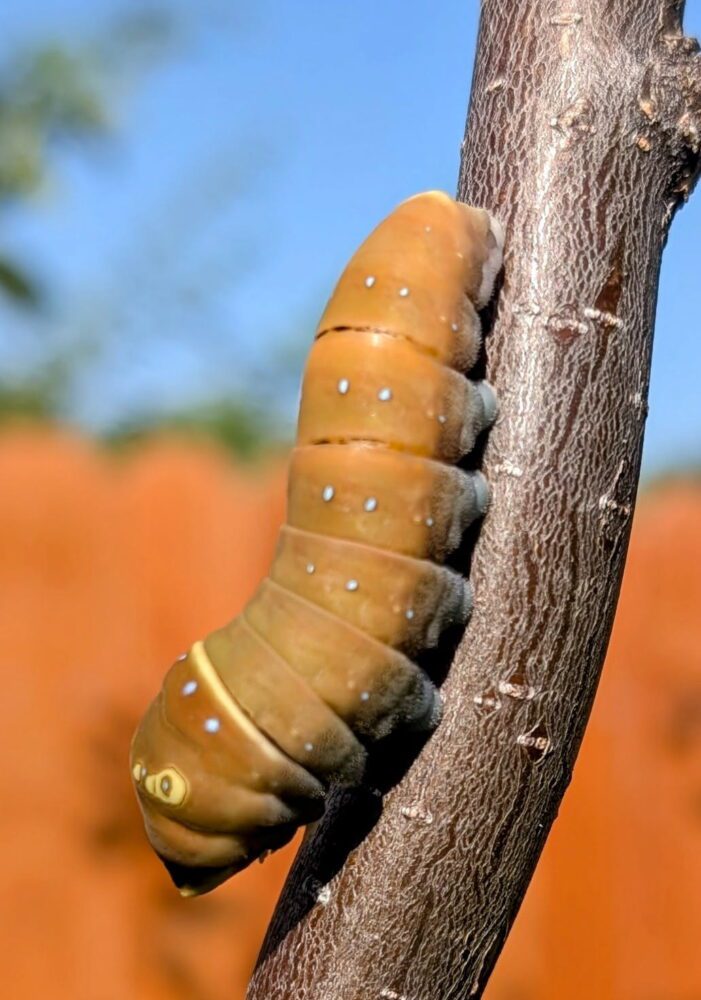
Banded Hairstreak, by Marc Bailey. Like many observers this year, this summer I have not seen the numbers nor species of butterflies as in past years in the area around Los Alamos and further up in the Jemez. I kept checking the roadside dogbane along the Rio San Antonio corridor in the Jemez from late June through the first week of August and only tallied a handful of skippers (including Silver-Spotted, Kiowah, Taxiles), a few duskywings, and a couple of swallowtails during that period. I had a little better luck in that area when the white clover was in bloom which attracted Silvery Checkerspot and Northern Crescent. The Wood Nymphs showed up there in decent numbers when the Black-eyed Susans came out. They are always fun to watch as they hop along close to the ground! A bright spot was locating numbers of Banded Hairstreaks flitting about in their host plant, Gambel oak, near where I found Colorado Hairstreaks last year. On July 14 just before 9:00 am, I spotted a butterfly silhouette at the very top of an oak bush. I was excited thinking it was a Colorado Hairstreak but looking at my first photo I was equally excited seeing it was a smaller Banded Hairstreak! I watched that one for a while and observed it challenging others flying by and then returning to the same spot. I moved along checking other oaks closely and observed several more high in the canopy exhibiting the same behavior of spiraling off with nearby fliers then returning to nearly the exact oak leaf.
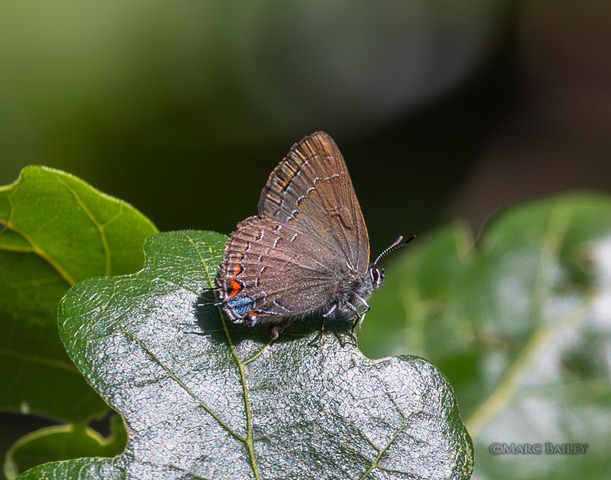
Knowing they would return to the same spot helped in trying to get decent shots, but I noticed when they perched, they would angle their wings to be as perpendicular as possible to the sun’s rays trying to warm up. That and their small size made focusing a real challenge. I returned to the same area a couple of more mornings in July and saw Banded Hairstreaks in the oak on each occasion. The last time I saw them was on July 28, and there were only two tattered individuals observed. I spotted my first Banded Hairstreak last year along the Rio San Antonio nectaring on roadside dogbane but did not see a single one nectaring this year. I was happy to see they appear to be doing OK in their host plant.
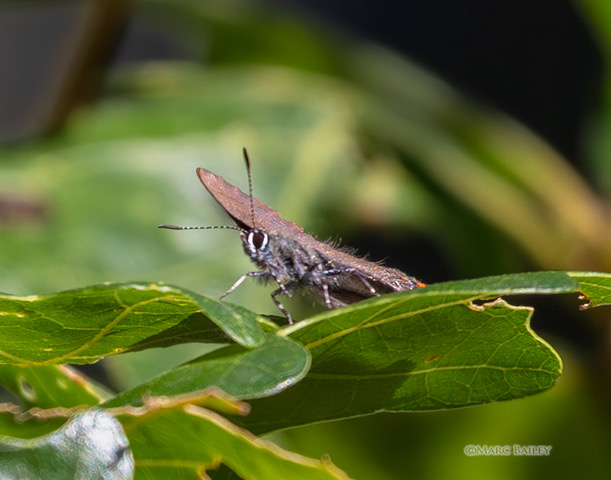
[Thanks, Marc!]
My Brother’s Milwaukee Monarch Factory. You may recall from past blog posts that my brother, Tim, lives in the Milwaukee area and he works hard to produce Monarch Butterflies. He has a bunch of milkweeds around his house. He watches for ovipositions, eggs and first instar caterpillars, which he plucks from the milkweed plants and installs in washed plastic peanut butter jars which he suspends in his Monarch Motel – a recycled bird cage which keeps out the predators.
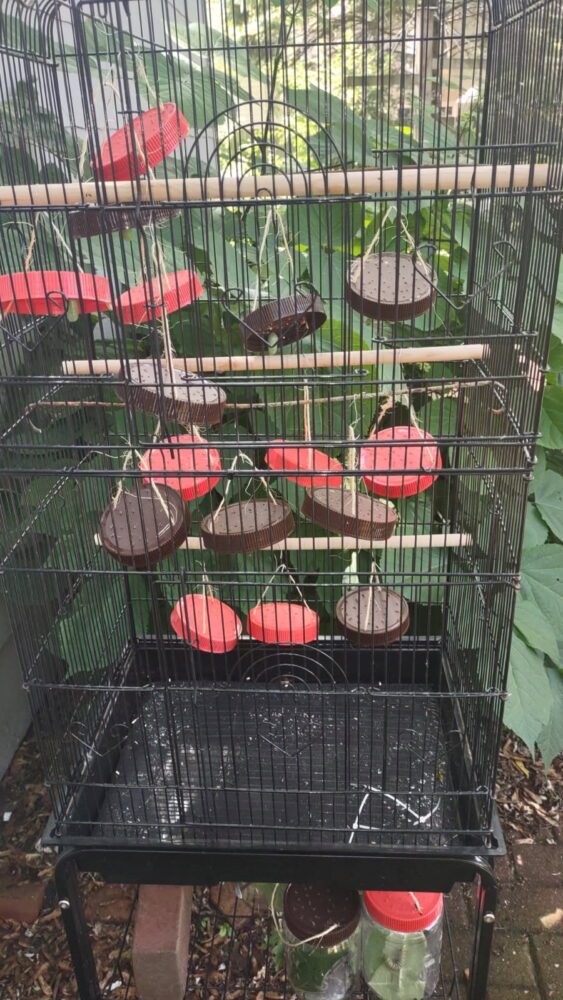
He feeds them fresh milkweed leaves and monitors their progress. As each one pupates under the jar lid, he unscrews the jar, leaving the lid suspended safely within the cage.
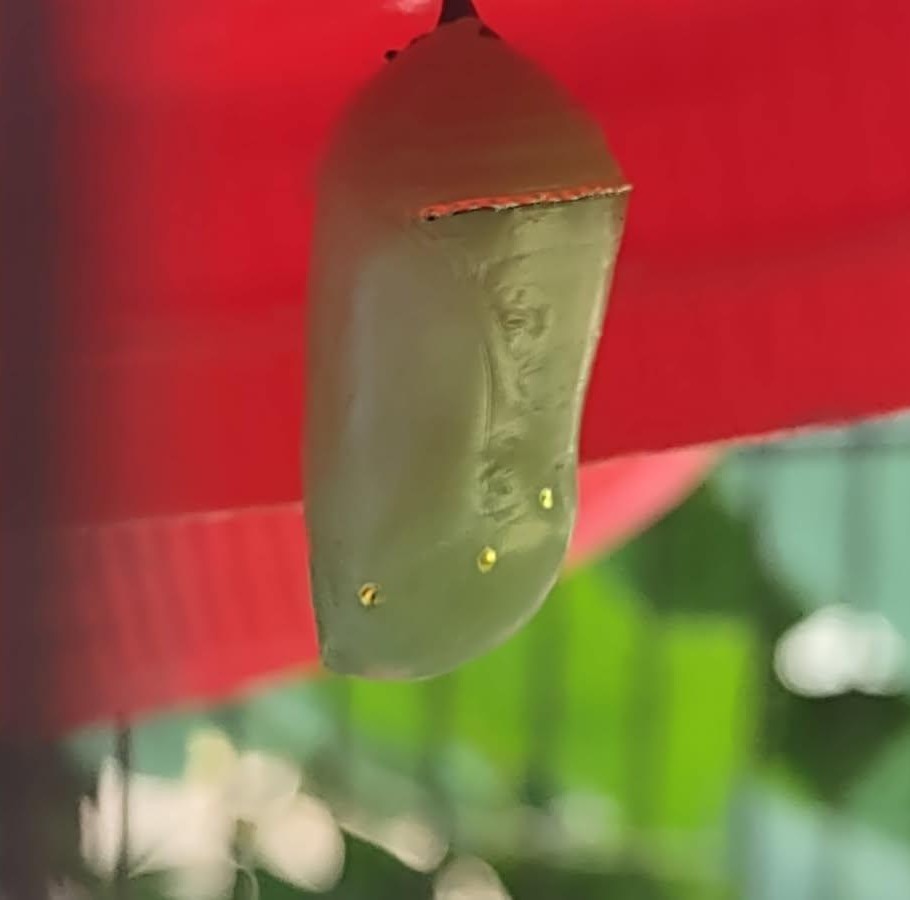
Eventually they each produce a new adult Monarch. Each year he seems to increase production. This summer at last count he was up to 30 Monarchs!
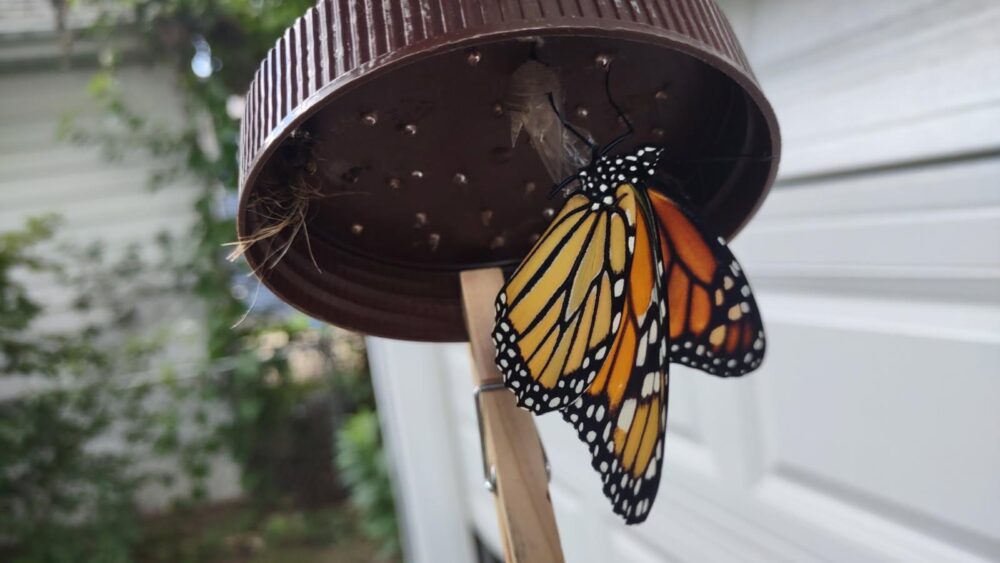
Way to go, Tim!!
En Route to the Lepidopterists Society Meeting in Arizona . . . Adventures in the Peloncillos, by Mike Toliver. While heading generally for Sierra Vista, AZ, Steve, Simon and I took time to explore some great spots in SW NM. One of my favorites was the Peloncillo Mountains, a place which holds many fond memories for me. It was in these mountains where I first saw the Red-bordered Satyr (Gyrocheilus patrobas) – quite a sight in late fall of 1975. They were everywhere! It was in these mountains where, in 1973, I collected the first specimens of Megathymus ursus from NM by digging up larvae in Yucca arizonica. I’ve also encountered swarms of Agathymus aryxna, which uses Agave palmerii for its larval foodplant. All that was on my mind as we drove down NM Hwy 338 through Animas. But late July is not the time to see adults of most of those critters, so I was anticipating other beasts I’d seen there in July – like Atrytonopsis lunus.
Our first stop at a dry wash crossing the road before we got into the mountains yielded the recently-described White-tufted Sootywing (Pholisora ablicirrus), which was new for all of us. Unfortunately, none of them wanted to pose for me and my camera. As we got into the mountains, the impact of the 2022 Foster Fire and the ongoing severe drought became increasingly obvious. Very few puddles of water, almost no nectar sources and not many obvious butterflies. In fact, I got pictures of only a few very common species (more on them below). I satisfied myself with pictures of other critters, including larval foodplants of Megathymine butterflies.
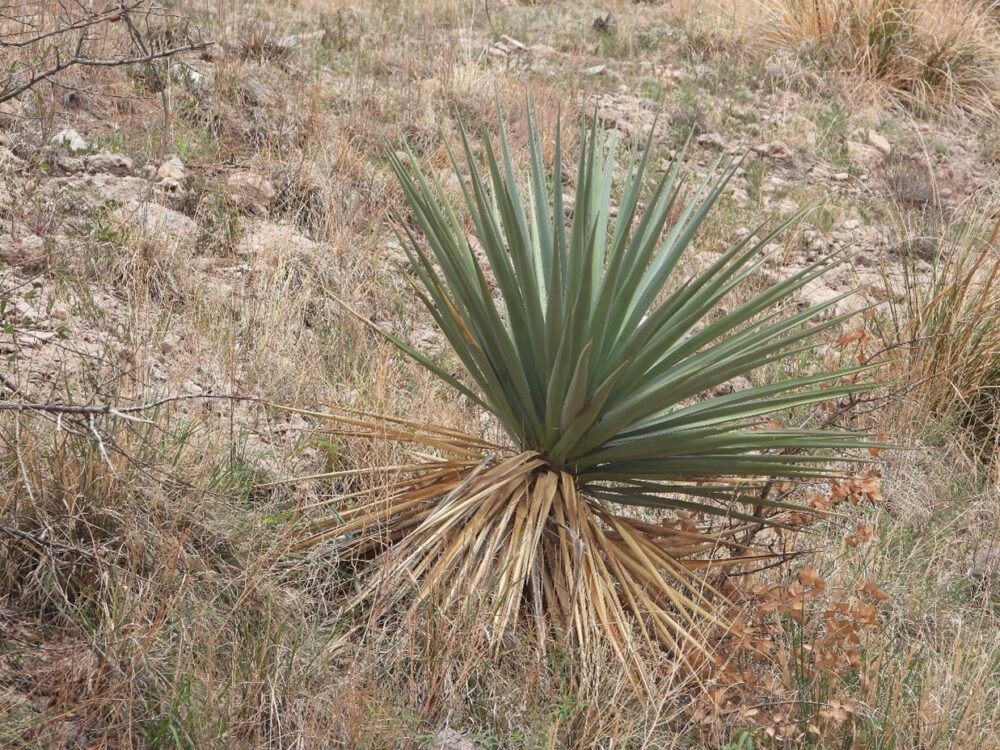
I found what appeared to be an individual of Agave parryi which had old burrows of Agathymus, suspiciously on the upper side of the leaf. I was expecting Agave palmeri here and we certainly saw numerous individuals of that species, but this one seemed a bit odd. And the fact that the old Agathymus burrows were on the upper side of the leaf made me doubly suspicious, as Agathymus aryxna typically has its burrows on the underside of A. palmeri leaves. If this plant is A. parryi, and those are genuine old burrows of Agathymus, perhaps this is an area where Agathymus neumoegini and A. aryxna meet!
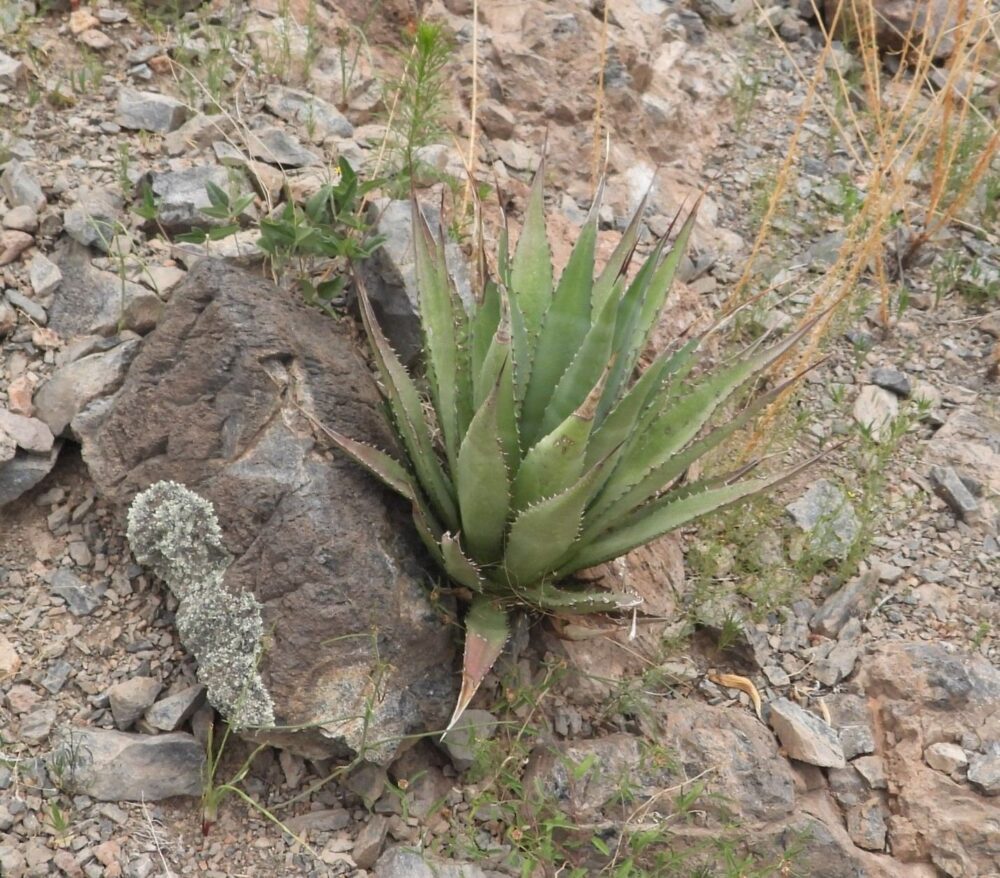
There are valid records of Agave parryi from the Animas and Big Hatchet Mountains nearby, which should be examined for Agathymus neumoegeni. I posted the picture above on iNat as Agave parryi and a graduate student from Texas identified it as A. palmeri, later revising the ID to Agave after I discussed the old burrows of Agathymus. Stay tuned!
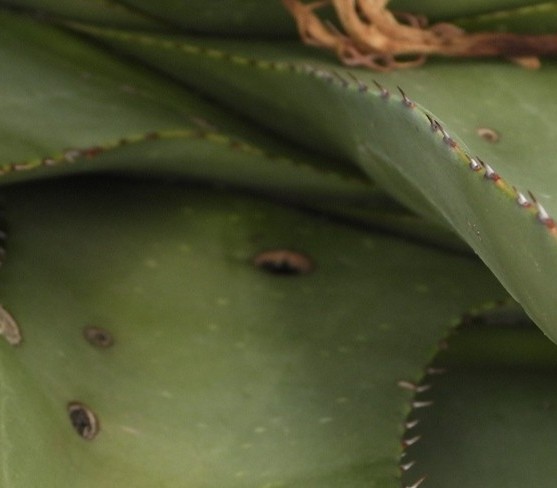
I spotted an Elegant Earless Lizard posing for me. This is a lizard that so far is known in NM only from Hidalgo County.
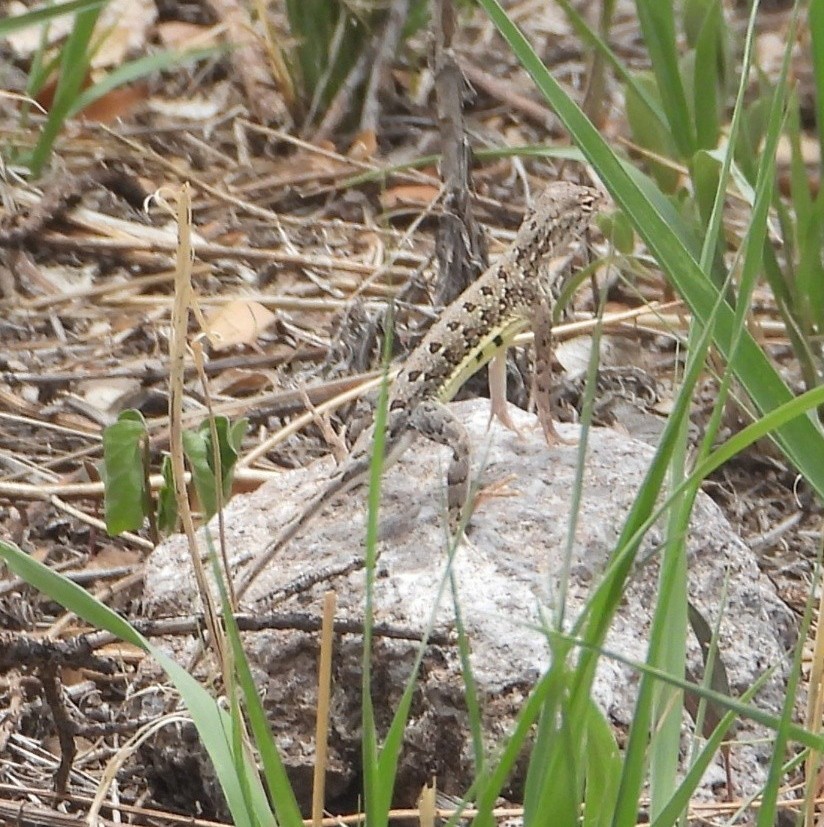
I spotted a Lycid beetle feeding on flowers near our first stop at the base of the canyon. It is distasteful, with it’s bright orange and black coloration. Interestingly, there is a group of moths that are Mullerian mimics of these beetles. These moths, in the family Zygaenidae, produce cyanide. They’re day-flying moths and can be virtually indistinguishable from these beetles without a close look.
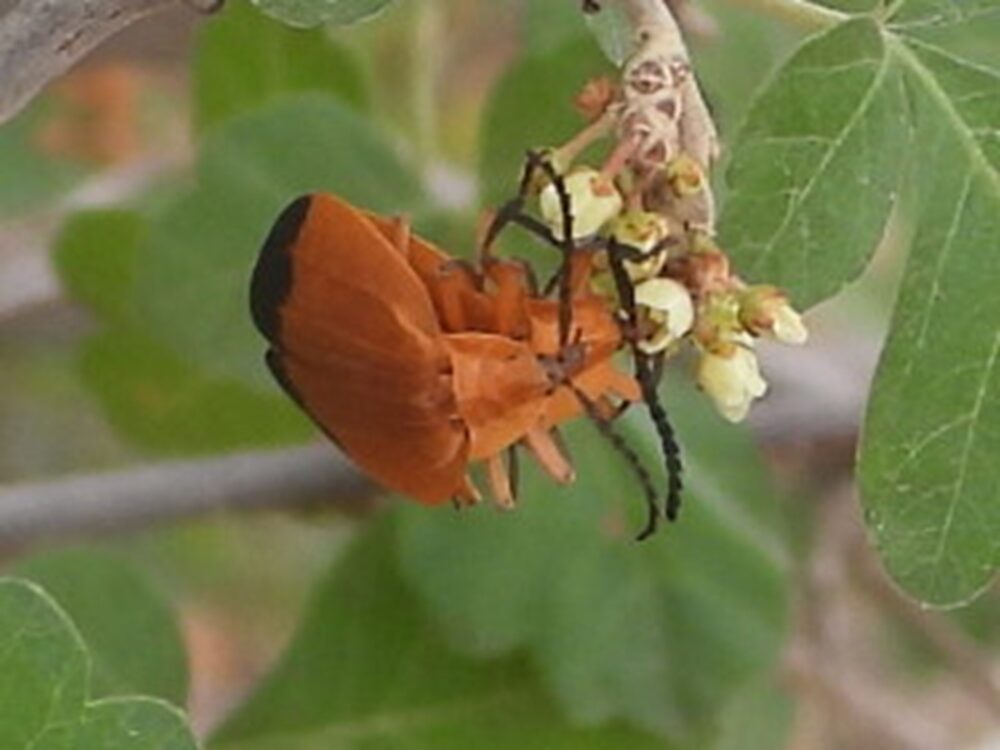
Speaking of beetles, Simon and I came across what we thought was a busy ant colony, with tens of individuals running across the dry creek bed. On closer examination, they turned out to be Tiger Beetles – Cicindela sedecimpunctata, the Western Red-bellied Tiger Beetle. I’ve never seen that many tiger beetles in one place!
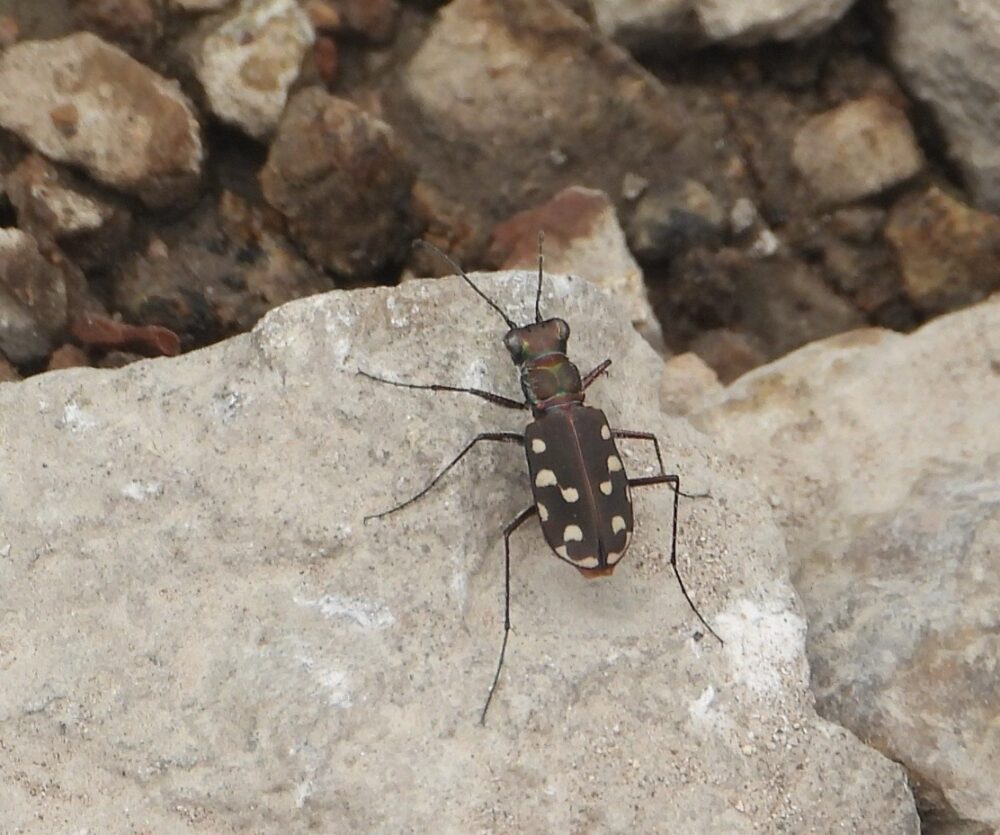
We also did see 11 species of butterflies, most of which were unremarkable. I managed to swat a Zerene cesonia with my net rim; I think it was the only specimen of that species we got that day, though plenty of them flew by us. We also saw some Phoebis marcellina. All in all, not a great showing for such a nice spot. Drought, combined with the 2022 Foster Fire, certainly have had their impacts. I did get some worthy pictures of larval food plants for BONM, and a potential mystery (Neumoegen’s Giant Skipper?) for future expeditions.
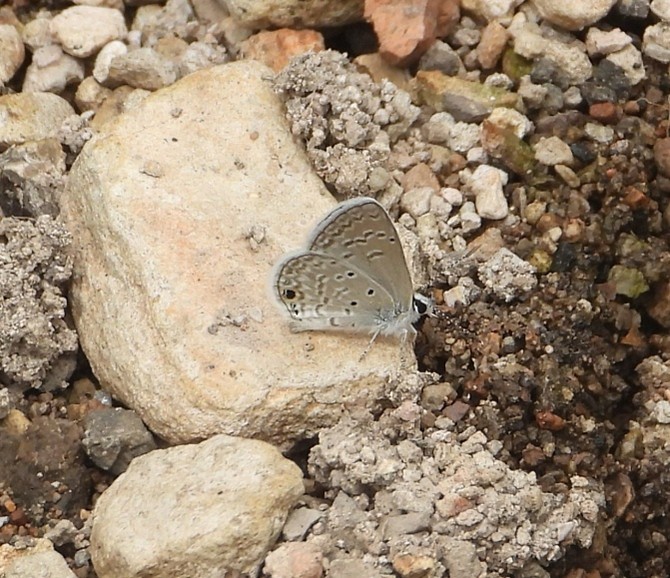
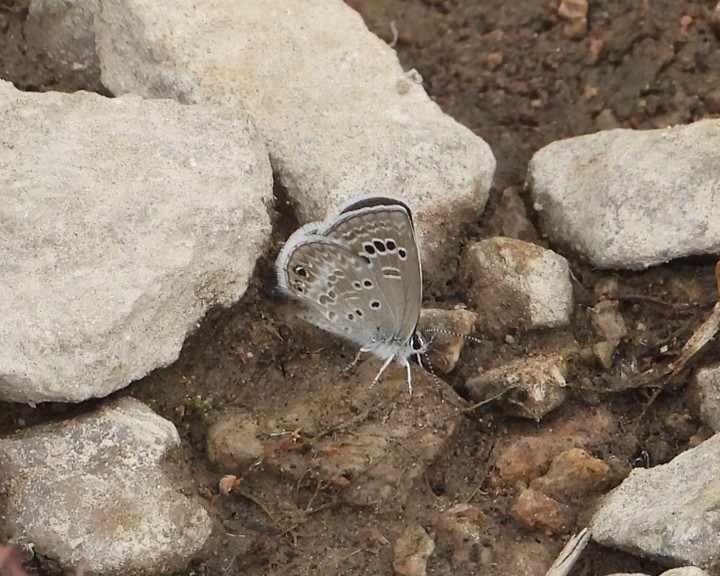
From Las Cruces Area courtesy of Jim Von Loh: Recently I’ve visited the Rio Grande from Mesilla Valley Bosque State Park to Leasburg and walked into Soledad Canyon to check the spring (only a little wet shine on the rocks a few days ago). Release of water from Percha Dam was curtailed the first week of August, so the riverine/riparian habitat has changing/in-flux elements. However, the microburst rainfall we’ve had makes it tricky to generalize, area-wide, about runoff and groundwater seepage right now, some sites are quite wet and productive, but many are not.
The butterflies I’m seeing are still low in numbers and common species regionally – yesterday there were 2 monarchs along the Rio along with queens, sulphurs, oranges, and crescents. In the canyon there were hackberry emperors, AZ sisters, red-spotted purples, two-tailed swallowtails, sleepy oranges, and a small variety of blues, duskywings, sootywings, scallopwings, etc. (not many skippers when checkered-skippers are removed from the mix).
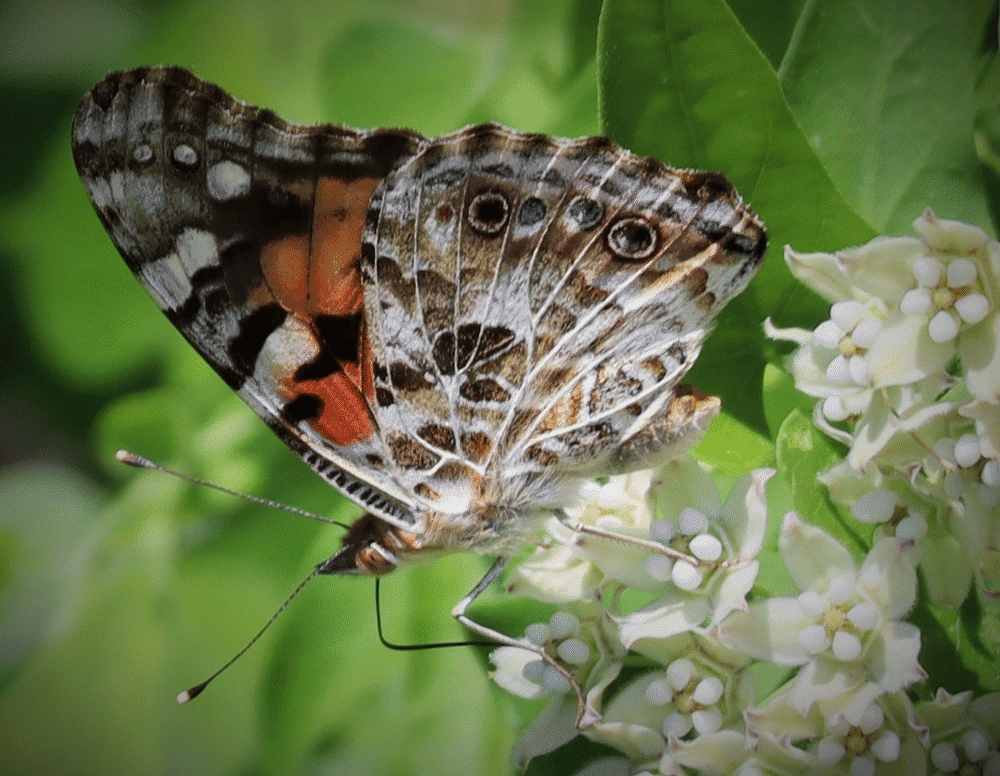
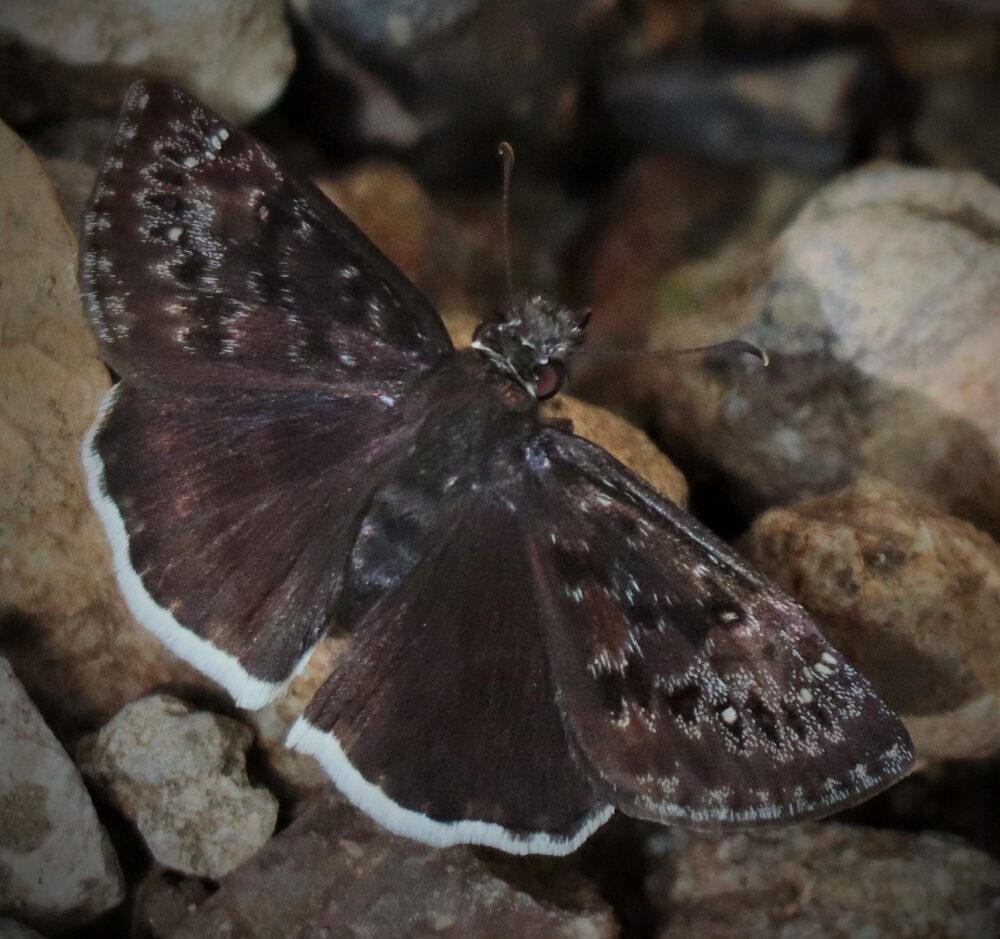
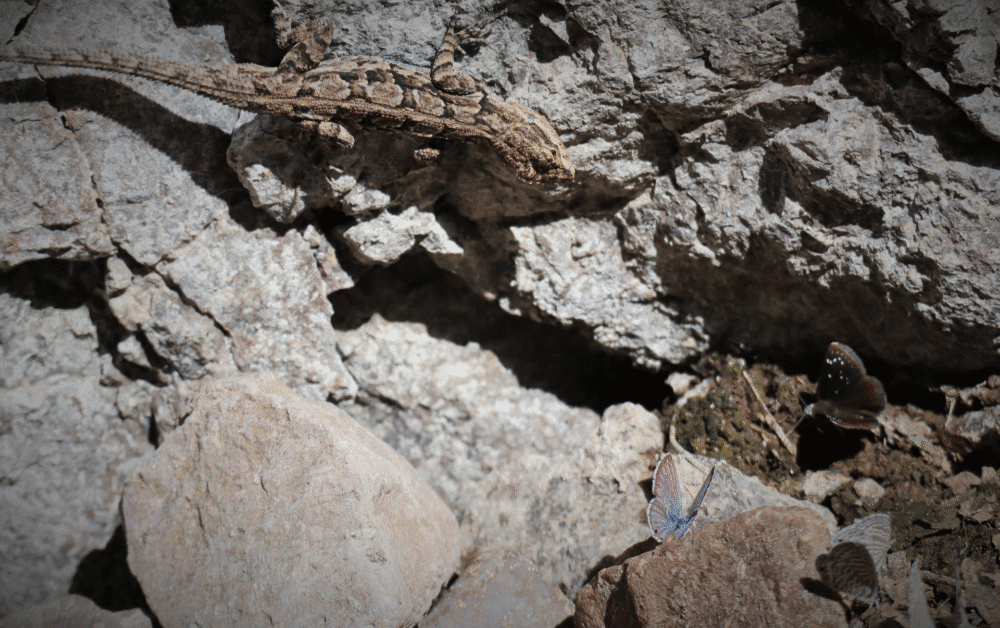
[Jim, thanks for that informative and timely update. Some of your thoughts/comments ring quite true with me this summer. First, microbursts are happening here, too; some quite concentrated and setting places rapidly awash. Second, thanks for reminding me what a Painted Lady looks like! As with many species that we once thought to be common and routine weeds (Checkered Whites, Marine and Reakirt’s Blues, Dainty Sulphurs) many were not seen for months. Some are now re-appearing, but it is barely one here, one there. Finally, thank you for that awesome duskywing shot! It reminds me that we have narrowed down its identity to only three choices: Mournful, Southwestern Juvenal’s and Scudder’s. Nice to know that challenges remain!]
En Route to the Lepidopterists Society Meeting in Arizona . . . Willow Creek, Mogollon Mountains, by Steve Cary. Simon and Mike and I were in the Mogollon Mountains, Gila National Forest on July 29. This is the highest, coolest, wettest spot one can “easily” drive to in southwestern New Mexico. There are meadows, campgrounds and summer cabins, though on a small scale because the accessible valley bottom area is not large. It is a wonderful oasis in steep, rugged country. It proved to be a reasonably productive day as we drove up through the ghost town of Mogollon and continued upward through areas severely burned back in 2012(?). Most creek crossings had occasional patches of water or damp sand, with some nectar and a few butterflies. But we pushed on to get to our destination as quickly as possible because afternoon cloud development can spoil butterfly outings in high country.
On the mesa overlooking the Willow Creek valley, we missed a skipper, but got a good close look at Arachne Checkerspot (below).
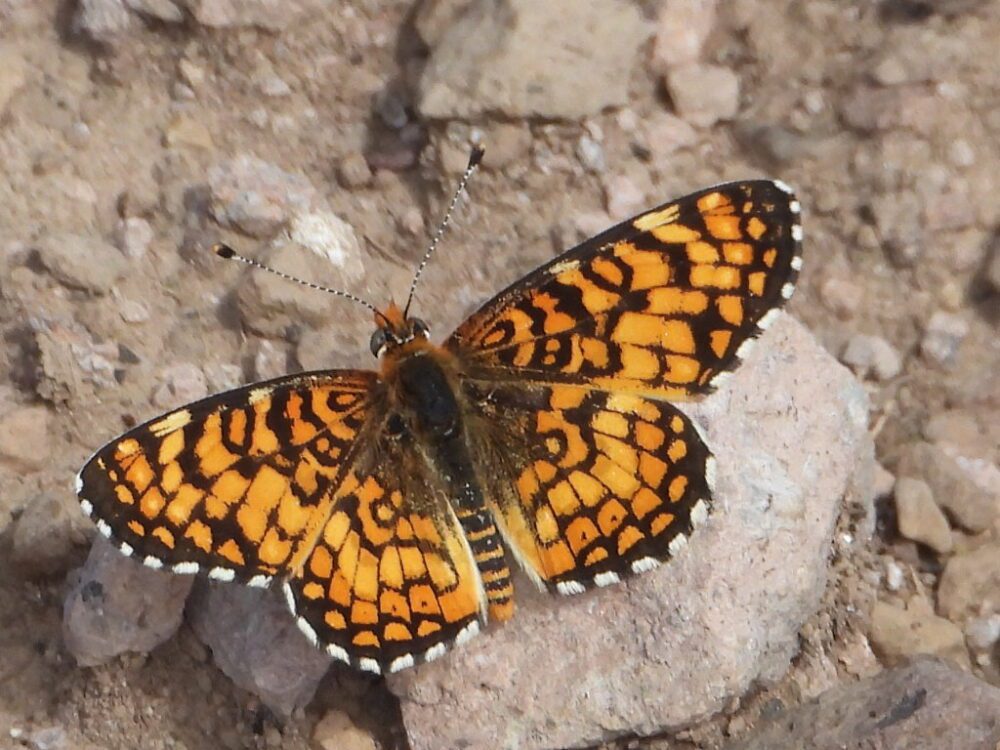
After descending to the main valley, we were greeted by an oasis if ever there was one.
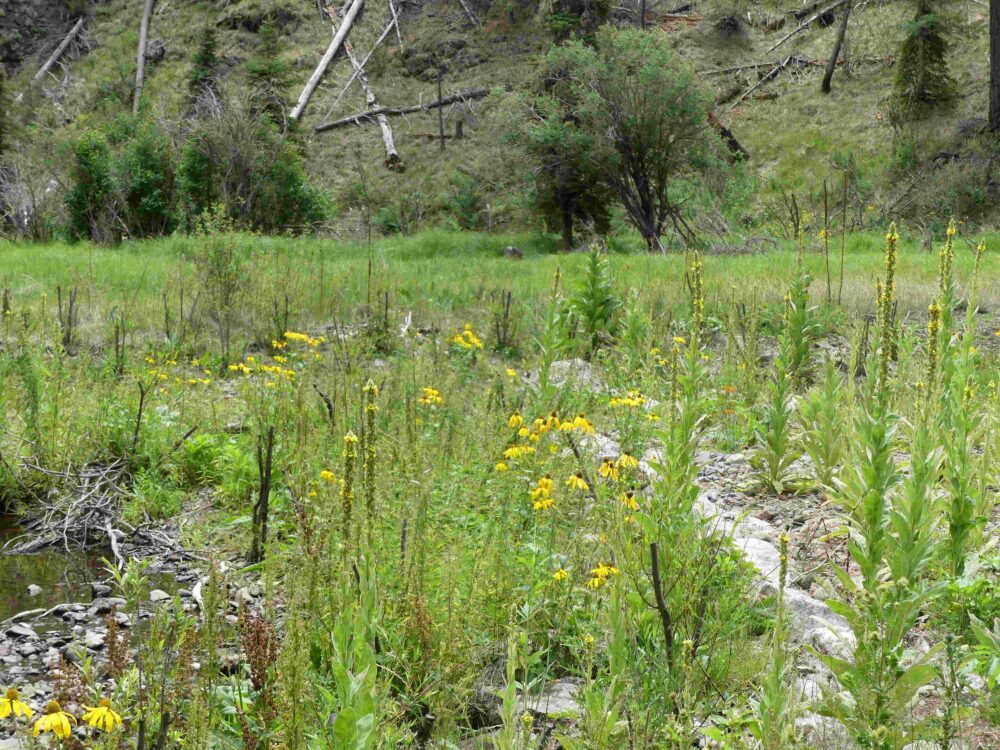
Over about two hours, we worked hard and were rewarded by about two dozen butterfly species, but nothing was seen in large numbers. Almost everything was seen along Willow Creek itself, which had a small amount of flow and was lined with cutleaf coneflowers and occasional patches of sneezeweed, both great butterfly attractors and basically the only nectar around in this otherwise very dry country. It was great to see Bramble Hairstreak because its caterpillar food (Ceanothus fendleri) responds positively to fire, and fire is a big part of the local scene.
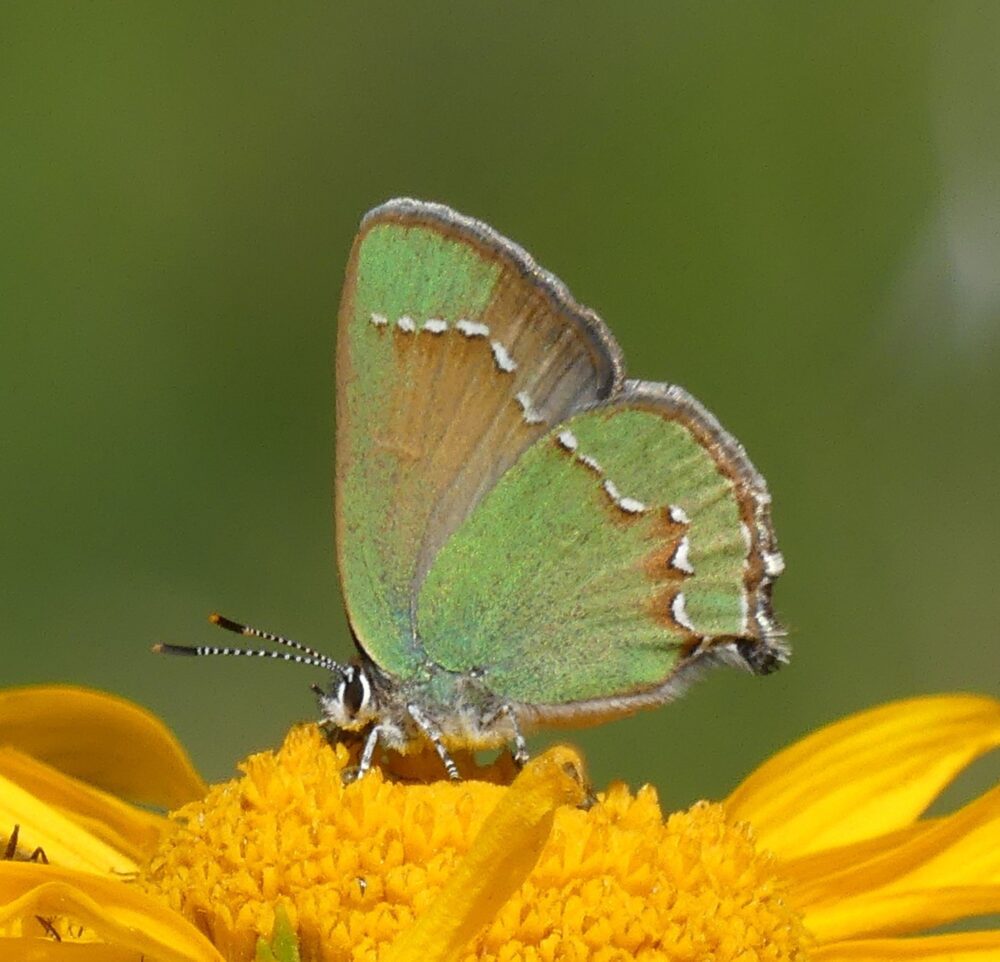
The presence of several Garita Skippers was consistent with high grassy meadows, which occur along the valley bottom but also much higher in the adjacent mountains.
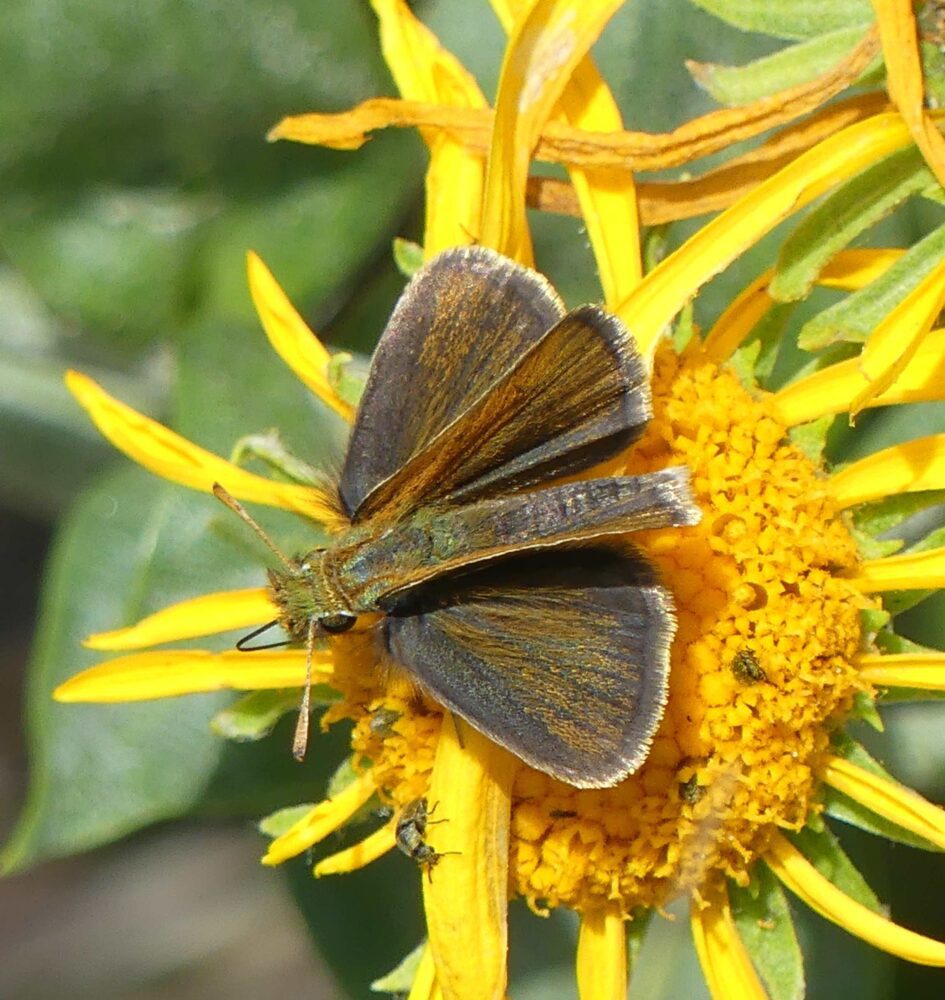
If you butterfly in southern New Mexico, you probably have seen Ceraunus Blues this summer. They seem to be having as good a year as anything is. We saw five or six of them nectaring at coneflowers along Willow Creek, which is pretty high for this normally lowland butterfly.
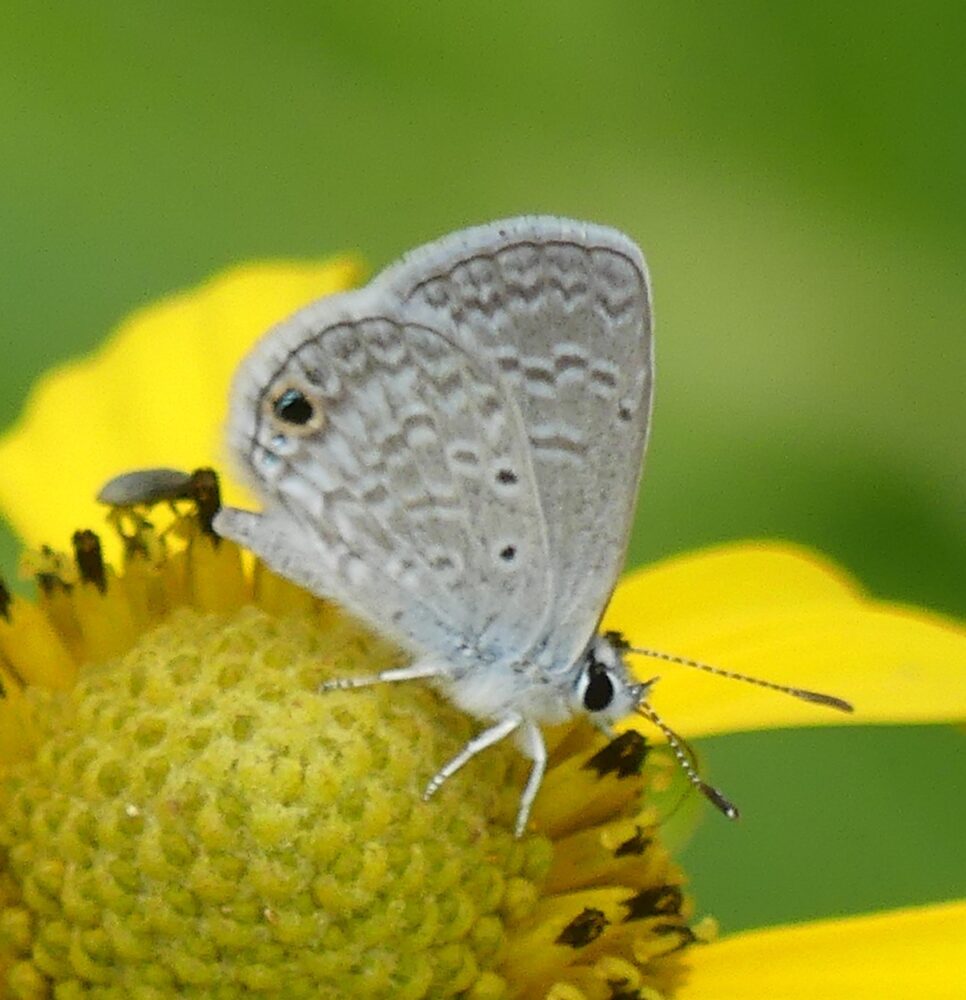
No mid-summer trip to the high country in southwestern New Mexico would be complete without seeing some Southwestern Fritillaries. Sure enough, we did document perhaps a half dozen. These two below were capitalizing on nectar from a thistle flower along the watercourse.

Our focus on butterflies was occasionally broken by other amazing creatures, not the least of which is the insect below. No, it is not a tarantula hawk wasp, as Simon was very quick to observe . . . as the eyes face forward, making it a robber fly. Just to seal the deal, we watched as it launched and chased clumsily (in my opinion) and unsuccessfully after a Hoary Comma!
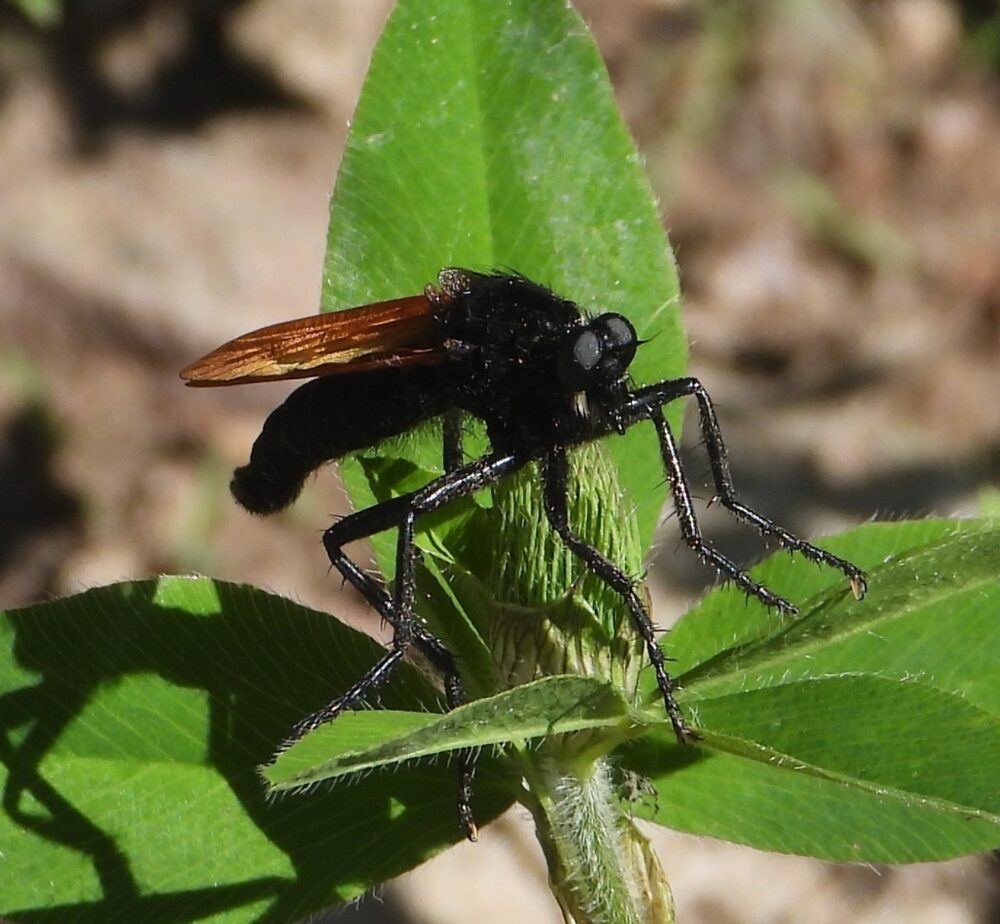
As we departed Willow Creek, we sustained a tire puncture. We parked and put on the spare tire. After that came the concern about getting yet another flat from any random sharp rock, which no doubt number in the millions along the local gravel roads. But as we drove along we instead were continually and happily distracted by more wonders of the Gila Country.
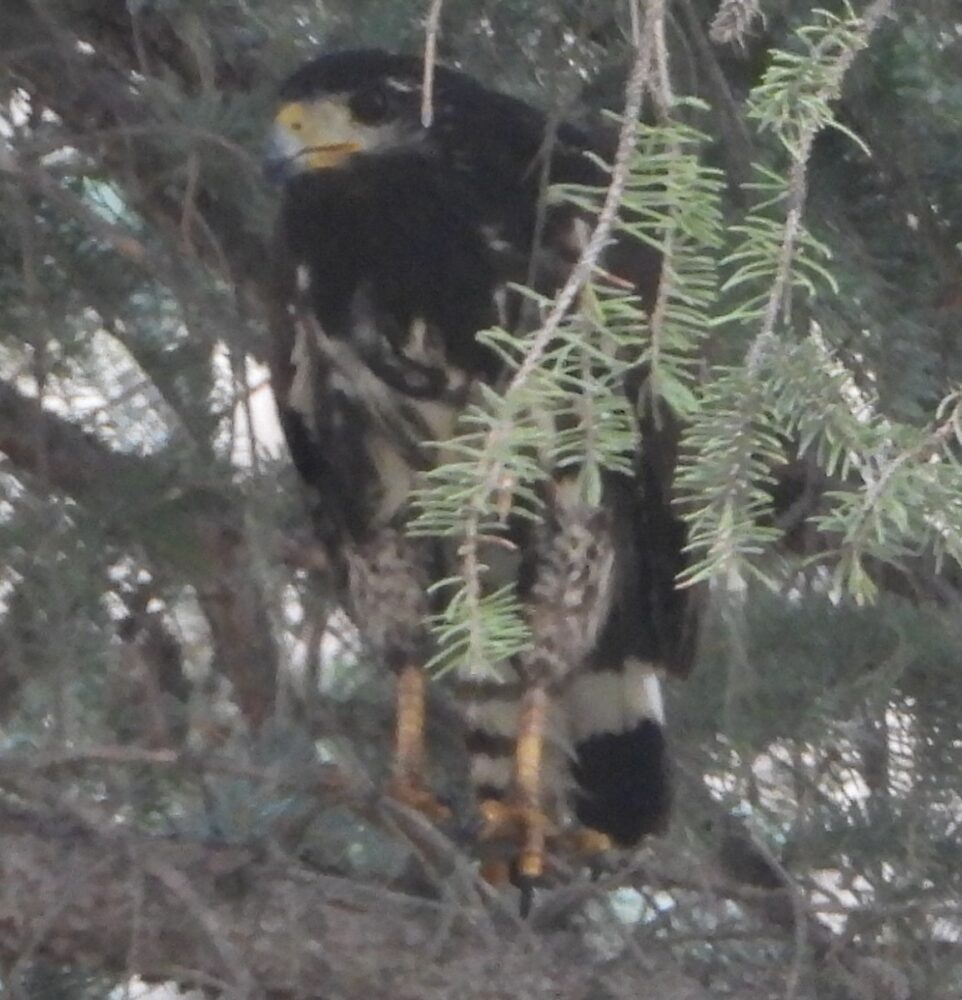
Mike even discovered the cool caterpillar below, then patiently held its leaf shelter while I snapped off a few shots.

Then there were some elk and, well, you get the idea. I wish I lived closer!

Great stories from all. I really need to get up Wheeler!